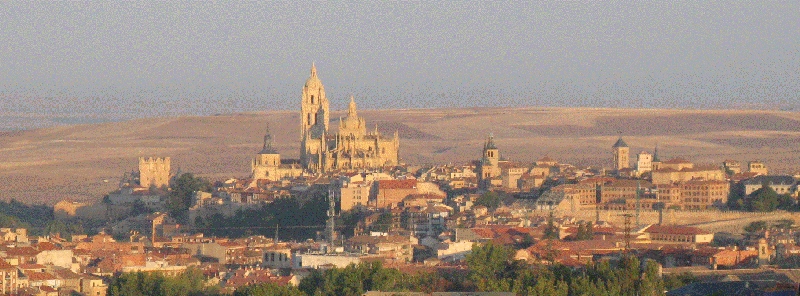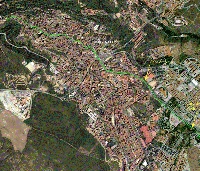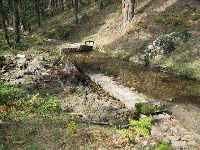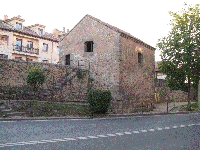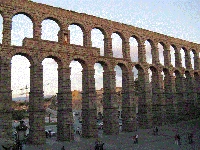Aqueduct museum of Segovia
The new complex of the Royal Mint houses also the Aqueduct Interpretation Center, a modern multimedia and interactive area. This aqueduct museum
is small - only two rooms - but of high quality, with a few models and many information panels with all kind of details of aqueduct construction in general
and the specialties of the Segovia aqueduct, its source, bridge and subterranean course inside the town center.
And do not forget the well-equipped bookshop in the Royal Mint.
As said, the Centro de l'Interpretacion del Acueducto is co-located with the Museo Real Casa de Moneda de Segovia (the Royal Mint), Calle la Moneda, Segovia.
The museum is quite close to the Alcazar castle, it takes a 20 minutes' walk from the Plaza Mayor.
Opening hours: Tuesday from 10.00 - 14.30h, Wednesday - Sunday from 10 - 18.00h, Sunday from 10.00 - 15.00h.
|
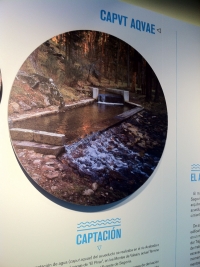
| 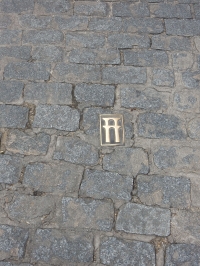
|
Inside the town
The itinerary inside the town starts at the Postigo del Consuelo and changes course (via the Calle del Obispo Gandasegui and Calle Gazzola di Ceretto) to finish at the Plaza del Seminario,
where the overground stretch of the aqueduct ends and the subterranean section starts. Where exactly this change occurred is unknown. It is supposed that this area
would have housed a 'castellum aquae' (basin from where the water distribution in the city has started) from which the aqueduct probably continued underground.
Once it has passed through the square, the channel reaches the Plaza de la Reina Dona Juana, formerly known as the Plaza de las Arquetas. The route then crosses
Ildefonso Rodriguez street, Colon, Plazuela de la Rubia, and Cronista Lecea street, until we arrive at the Plaza Mayor, this being likewise crossed diagonally until continuing
down in the Marques del Arco street. Then it transverses the Plaza de la Merced and Daoiz street and, after passing through the last sand-trap, it reaches the Plaza la
Reina Victorio Eugenia in front of the Alcazar castle, where the known channel ends.
The itinerary is signposted by twenty four 10 x 15 cm bronze plaques inserted into the pavement and coincides exactly with the subterranean course of the channel.
|
